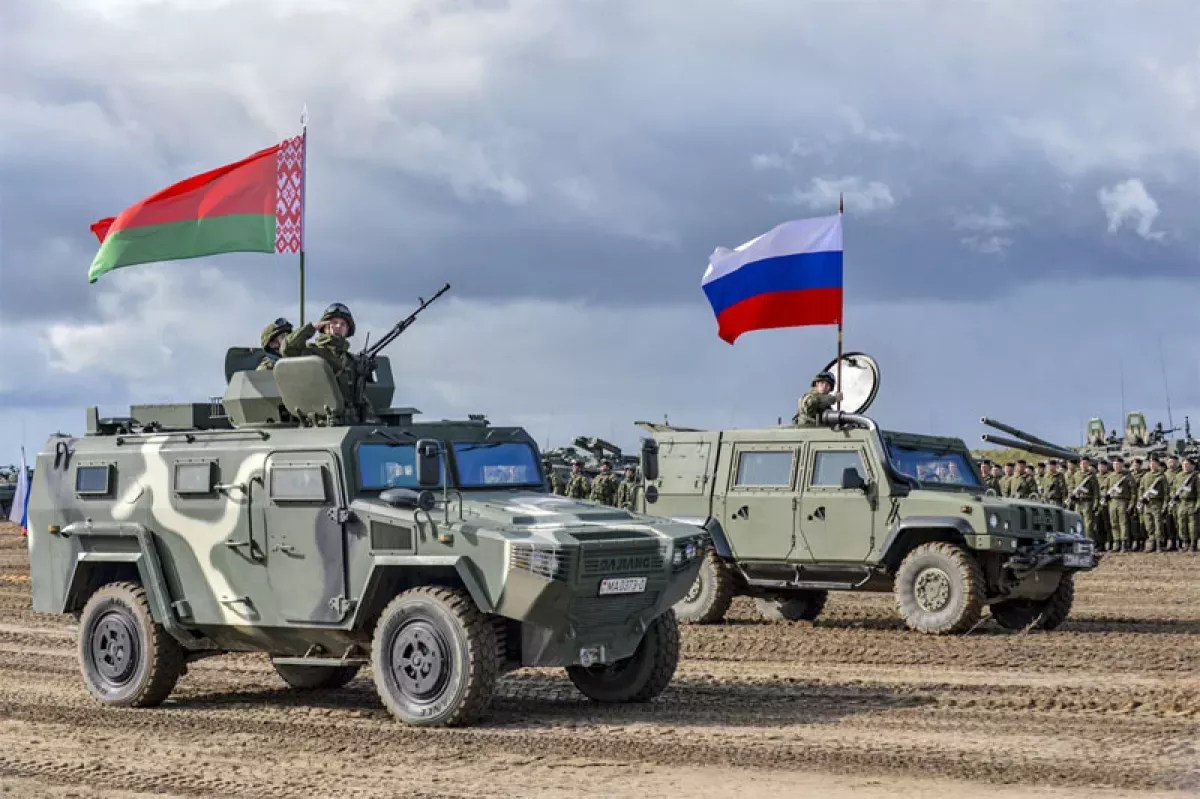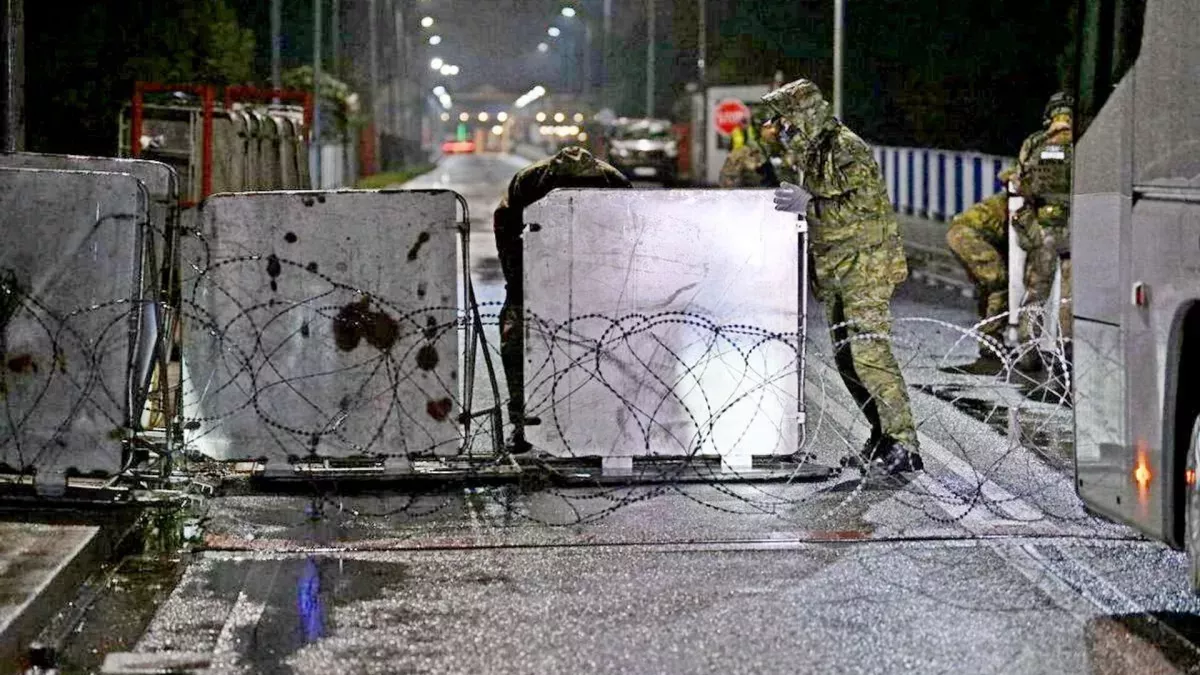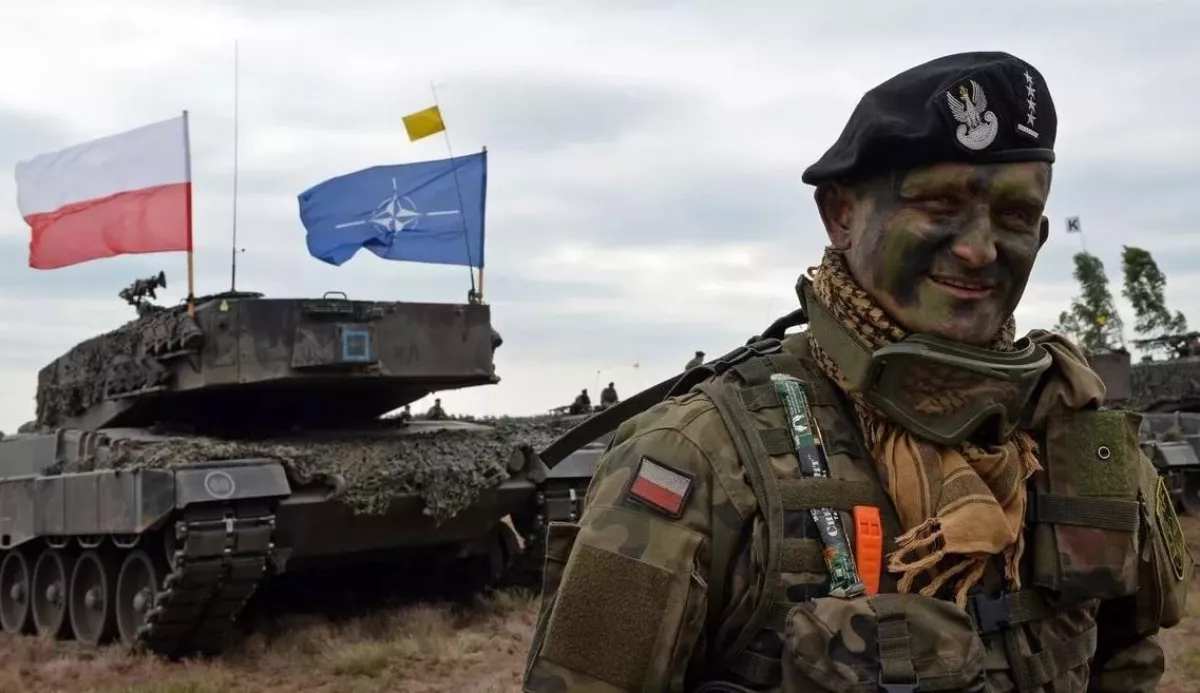How to stop the Balkanisation of Eastern Europe? From border closures to drone incursions
Military-political tensions are sharply rising in Eastern Europe. The region increasingly resembles the Balkans of the early 20th century, on the eve of World War I. The good news is that these negative trends can be stopped, and the remedies are well known. What is needed is political will from all sides.
The past week has brought many alarming developments from Eastern Europe. Due to the war between Russia and Ukraine, the region has naturally been under intense global scrutiny in recent years, but unfortunately, the longer the war continues, the more it becomes normalized—at least as long as it remains within the borders of the two warring states.
Now, however, a series of events has occurred that go beyond the territorial scope of this war, significantly increasing the risks of horizontal (i.e., geographical) escalation and creating new preconditions for a major crisis across Europe as a whole. At least two such events can be identified.
A Series of Events Amid the “Zapad-2025” Exercises
First, Polish Prime Minister Donald Tusk announced on September 9 that his government had decided to completely close the borders with Belarus, including railway crossings. This decision was implemented during the night of September 11–12. How long the borders will remain closed is still unclear.
Initially, Warsaw justified its decision by pointing to the strategic Belarus-Russia exercises “Zapad-2025”, scheduled to take place in Belarus from September 12 to 16. However, Polish Interior Minister Marcin Kiewinski stated that the “border closure is indefinite,” and Polish authorities will “continuously monitor the situation” for potential security threats.
However, it is difficult to say exactly what security threats the border closures are meant to address. At the end of May, the Belarusian Ministry of Defence decided to move the exercises further from the western borders and conduct manoeuvres at training grounds in the central and eastern parts of the country. This measure was intended to reduce the risk of escalation around the exercises.
For the same reason, Minsk also reduced the scale of “Zapad-2025”. Instead of the initially planned Belarus-Russia contingent of 13,000 troops, about 7,000 are participating, including roughly 1,000 Russians.
Moreover, Minsk invited all OSCE member states to observe the exercises, including all neighbouring countries, even though, according to the Vienna Document, at this scale of exercises, it would have been permissible not to invite observers at all, or even not to notify OSCE states about the planned manoeuvres.
Belarus also offered a very liberal observation regime, allowing observers to coordinate what they specifically want to watch and to communicate directly with the soldiers. Finally, Belarus declared its readiness to host not only observers but also inspection missions under existing arms control and confidence- and security-building agreements.

Unfortunately, none of these de-escalatory measures taken by Minsk were acknowledged by its western neighbours. On the contrary, Poland made the completely unprecedented decision to close the entire border.
It is clear that in reality, this decision is linked not only to the exercises themselves but also to other factors—possibly several circumstances at once. For example, a direct trigger for such an unprecedented step could have been the recent arrest of a Polish monk in Belarus on espionage charges.
The Polish government may have decided to raise the stakes in the political conflict with Minsk that has been intensifying over the past five years. By taking this measure, Poland is also clearly signalling to its allies in the EU and NATO that it faces heightened risks and security threats from the east and therefore requires their solidarity and full material and technical support.
The second event of the past week attracted even greater international attention. On the night of September 9–10, Polish airspace was reportedly violated by 19 drones.
Many aspects of this situation remain shrouded in uncertainty, making it difficult to draw definitive conclusions. However, the Polish government firmly asserts that the drones were Russian and that their intrusion was deliberate—not accidental or the result of electronic warfare interference.
It is clear that this is an extraordinary event. This is not the first time that missiles or drones involved in the Russian-Ukrainian aerial duels have entered Polish airspace. However, the number this time is striking, even though they caused little damage, as they were “dummies” without warheads.
It appears that the Polish Air Force, along with allied nations that quickly became involved, managed to shoot down only three or four drones, while the rest fell on their own. This fact alone, of course, necessitates decisive action by the Polish authorities to reduce the vulnerability of their air defense systems in the future.
Interestingly, as it turned out, there could have been even more incursions. The General Staff of the Belarusian Ministry of Defense stated that it provided Polish (and Lithuanian) colleagues in real time with information about drones detected by Belarusian radars. Polish authorities confirmed this, as well as the fact that they reciprocated by sharing information with the Belarusians.
This operational and constructive military-level cooperation came as a pleasant surprise amid rising political tensions between Minsk and Warsaw, especially after Poland closed all border crossings. Unfortunately, this cooperation has not yet produced any positive outcomes. On the contrary, soon after, Warsaw announced that, in addition to closing the land border, it was introducing a no-fly zone along its air border with Belarus.
The Balkanisation of Eastern Europe
It is clear that, in the end, this week’s events have led to a sharp and large-scale escalation of military-political tensions in Eastern Europe. Both events are alarming not only—or even primarily—because of their unprecedented nature, but because they significantly expand the Overton window. The higher the escalation spiral rises, the more dangerous its next turn could become.

Amid these circumstances, it is difficult to imagine that, for example, the complete closure of the Polish-Belarusian border could become a long-term measure, as it affects the significant interests of too many third parties. The border crossings between the two countries are a key cargo artery for overland goods flows between Asia (primarily China) and Europe. Poland itself is also suffering considerable losses. Therefore, Warsaw will inevitably have to adjust its decision in some way.
Overall, however, as recent years have clearly shown, traditional liberal hopes that economic interests can significantly influence security decisions prove to be illusory. This makes the current developments even more alarming.
All the more so because these events organically continue and reinforce already emerging regional trends. To a certain degree, these trends can be described as the Balkanisation of Eastern Europe.
Belarusian analysts Sergey Bogdan and Denis Melyantsov wrote about this phenomenon back in 2021: "The countries of the region have already advanced considerably in the geopolitical fracture of Eastern Europe, narrowing the basis for peaceful cooperation and even coexistence, and drawing external actors into regional disputes, justified by references to various noble goals. At the same time, the societies and establishments of the countries in the region are largely unwilling to discuss the dangers of the developing situation and seem to overlook these trends."
In other words, the term “Balkanisation” is not used here in the sense of breaking up large, multiethnic states into smaller, ethnically homogeneous ones, but in the historical sense that the Balkans acquired in the early 20th century. The numerous concentrated contradictions there at the time formed a puzzle that sparked the outbreak of World War I.
Unfortunately, this analogy appears increasingly relevant in light of recent events on the Belarus-Poland border, not to mention the ongoing large-scale war in Ukraine.
Another parallel with the Balkans in the early 20th century is the similar nature of the escalation of military-political tensions. Today, much of what Austrian historian Christopher Clark described in his famous book The Sleepwalkers: How Europe Went to War in 1914 can be observed within and around Eastern Europe.
Clark concluded that it is difficult to assign responsibility for the outbreak of that war to any one particular country or politician. The world war was not caused by anyone’s malevolent intentions, but by an unfavorable sequence of interconnected events, processes, perceptions, and decisions that ultimately culminated in a catastrophe of global scale.
There is currently little reason to claim that any country or political elite in the region is seeking to start a large-scale war. However, the polyphony of fragmented interests and actions in Eastern European countries, as well as by external actors, is pushing the situation in the same direction as more than a century ago.
In particular, under the slogans of military deterrence against geopolitical opponents, there is an ongoing buildup of military infrastructure, personnel with weapons, and the weapons themselves. Unfortunately, this is precisely a case where a metaphor borrowed from drama is appropriate in political analysis: if a gun hangs on the wall at the beginning of a play, by the end of the play, it must fire.
Not “either–or,” but “both–and”
More precisely, the gun does not have to fire, but it very likely could, even if at the moment it seems improbable. There is no inevitable predestination here. And this is fundamentally important. It is one of the few pieces of good news in the current situation in Eastern Europe.

Another piece of good news is that, from the history and theory of international relations, we even know what is needed to ensure that the gun at the end of the play remains hanging on the wall. What is required is an understanding that relying solely on military deterrence to achieve the desired outcome over the long term usually does not work.
This is because defensive deterrence is always perceived by the opposing side as a policy aggressively aimed at them. In response, they do the same, often with even greater zeal—especially since these processes are always accompanied by a significant reduction, or even a complete absence, of communication between opponents.
As a result, military deterrence takes place amid growing misunderstandings and attributional perceptions, where the other side is inevitably assumed to have exclusively malevolent and aggressive intentions, even in cases where no such intentions actually exist.
This, so to speak, is a classic pattern. It has always been this way, and it is according to this often invisible logic that spirals of military-political escalation between states will continue to develop. These spirals lead to arms races, the breakdown of mutually beneficial economic cooperation, various crises, and ultimately, direct military confrontations. Even the presence of nuclear weapons cannot fundamentally change this logic or the mechanics of these processes.
The only thing that can make a difference is an understanding of this inevitable mechanism and the political will to make unpopular, yet practically unavoidable, decisions that can halt the further spiral of insecurity.
The essence of these decisions is that military deterrence (whose importance should not be denied) must be critically complemented by dialogue and cooperation. In other words, deterrence and dialogue are not mutually exclusive alternatives, but two integral components of wise security policy. Moreover, dialogue is needed not only between diplomats and experts, but also directly at the military level.
Quick and decidedly positive results of such dialogue were demonstrated, for example, by the aforementioned exchange of information about airborne drones between the defence ministries of Belarus and Poland. However, this is merely an example of a targeted interaction that helped minimise damage and risks in a specific situation, but it is incapable of producing longer-term positive effects on regional processes.
For that, dialogue needs to become the norm and be institutionalised. Only then will its participants, almost without noticing, be able to reach agreements on a great many issues.








